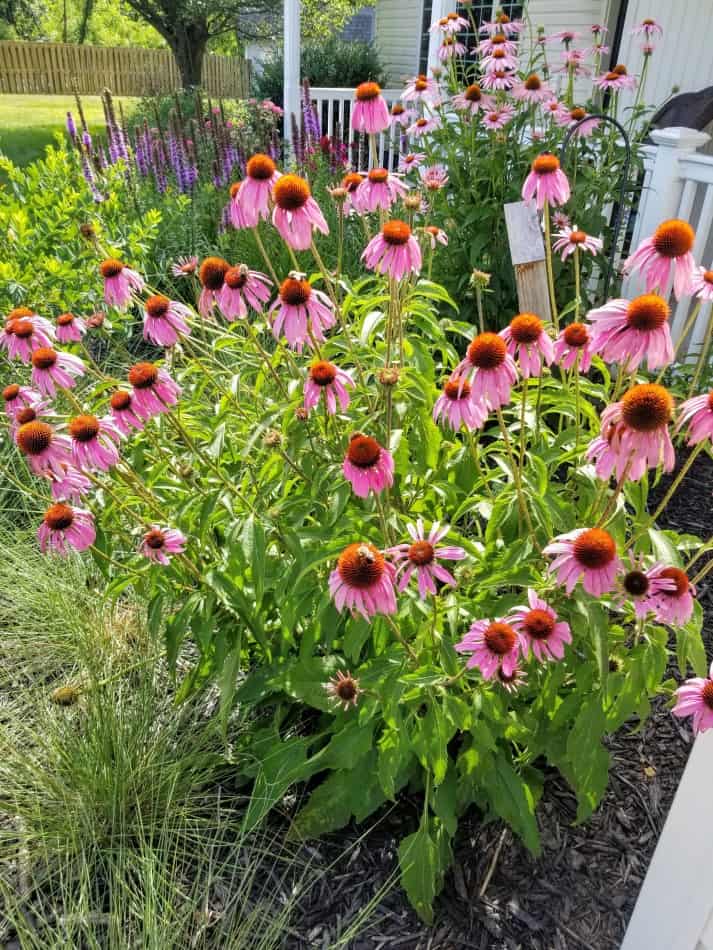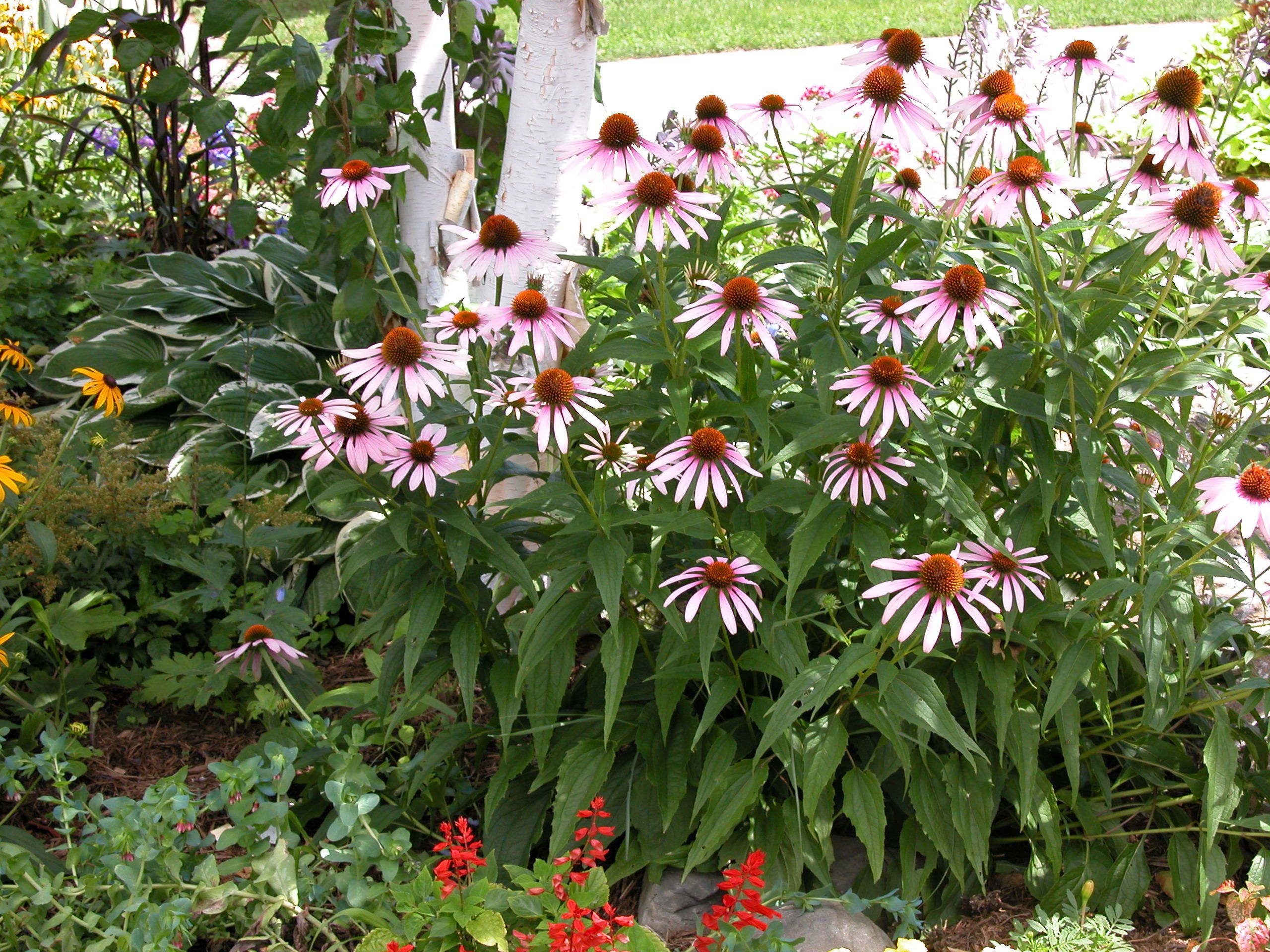Coneflower Growing Guide
Table Of Content

Although coneflowers thrive best in a soil high in organic matter, too much supplemental fertilizer can cause them to become leggy. Adding compost each spring usually gives them the nutrition they need for healthy foliage and blooms. Color Coded® ‘Orange You Awesome’ (Echinacea hybrid) produces large deep tangerine flowers with a contrasting dark center cone.
When and how should I divide coneflowers?
Globe thistle is one of the most elegantly colored plants around. It has fantastical large blue balls of steel blue flowers in midsummer, which would be enough. But making it even more lovely are its large coarse grayish-green leaves, which set off the flower beautifully. If you can bear to separate them from the foliage, globe thistle makes a great cut flower, lasting for weeks in the vase.
More About Coneflowers
Remember to provide adequate spacing between plants to allow for their mature size. This will prevent overcrowding and ensure each plant has enough room to thrive. However, if composting isn't your speed, you can use a slow release fertilizer such as plant tone or another low ratio product.

Sombrero® Adobe Orange coneflower (Echinacea hybrid)
To get a head start on the growing season, you can start the seeds indoors 6 to 8 weeks before the last frost date in your area. Fill small pots or flats with soilless potting mix and place 3 to 4 seeds in each pot. Once the seedlings emerge, place them under grow lights or in a south-facing window. Consider pairing coneflowers with other perennials such as lambs-ears, big betony, wood betony, or globe thistle to enhance their beauty even further. Not only will this combination add color and texture to your garden. Creating a pollinator-friendly garden with coneflowers is easy.

Lamb's-ears is a top pick for a groundcover in a hot, baked spot. Its silver-felted foliage quickly forms a dense, delightful mat. Depending on the type and your growing conditions, it may self-sow freely to the point of becoming a bother.
The fragrant blooms contrast nicely with the deep green foliage. Plant in a mixed border, native landscape, container or cutting garden. Purple coneflower (Echinacea purpurea) is the most common variety (and has more of a pinkish, mauve shade than a true purple). Coneflowers also can bloom in shades of white, cream, red, orange, and yellow. Purpurea, a familiar dusky purple daisy-like flower with a prominent orange center. Coneflowers are trouble-free but just watch out that you don't overwater the plant or root rot and fungal diseases like powdery mildew can occur.
'Green Envy' Coneflower
9 Garden Trends to Try in Your Own Yard in 2024 - PureWow
9 Garden Trends to Try in Your Own Yard in 2024.
Posted: Sun, 17 Dec 2023 08:00:00 GMT [source]
Coneflowers like plenty of sun and average, well-drained soil. Like any perennial, you’ll want to water new plants the first summer, to get them safely established. The yellow, orange and red ones can be a little tougher to get to survive for several years.
Coneflower Planting and Care
Utilize organic pest control methods and regular inspections to identify and address issues promptly, ensuring the longevity of your coneflower garden. Dig up the plant, divide the root ball into sections, and replant in a new location. Make sure to water well and provide adequate sunlight for successful transplanting. Remember to give each plant enough space to grow properly and thrive. Proper spacing ensures that each plant receives adequate sunlight and airflow for optimal growth. Coneflowers are versatile plants that can thrive in different types of landscapes, from urban gardens to cottage gardens.
Cottage Gardens: Favorite Flowers, with Grace Alexander's Seeds
Participants use real-world design techniques and strategies of proper plant selection and placement. His passion for gardening was rekindled when he moved in the countryside. Even as a child, he was allowed / required to help out in the garden on a regular basis.Through his current experience in online marketing and love of writing, this blog was born.
Note that coneflowers usually don’t bloom the first year after starting them from seed. Repot the coneflower to a larger pot with fresh potting mix when the root system has reached the sides of the container, or the roots grow out of the drainages holes. If planted in too much shade, they tend to get leggy and flop.
Dig up, divide, and replant the root clumps to keep the plants vigorous. This is a good time to propagate new plants and give prized varieties to friends and neighbors. They are heat and drought resistant, easy to grow, bloom for months, make great cut flowers, and attract birds and pollinators.
In hot humid climates, lamb's-ears may "melt down" in summer, becoming brown and limp. A different but related plant, big betony is worth growing for its shade tolerance, dark green crumpled leaves, and bright purple spikes of whorled 1-inch flowers in late spring. Embarking on the journey of creating a stunning coneflower garden is an exciting endeavor for any gardening enthusiast. If you want to propagate coneflowers from seed, collect seeds from a species or purchase them from a nursery. To start the seeds, keep the soil evenly moist and germination should occur in about 4 weeks. It’s important to note that they usually don’t bloom in the first year after starting them from seed.
When purchasing coneflowers from your local garden center, look for ones growing in a pot. "Some stores will sell them in bags that arrived from overseas," says Roethling. In the past, the only colors for coneflowers were pink-purple or soft white. And these are definitely pretty — one glance shows you how gorgeous old-fashioned coneflowers can look in a flower border. But over the last several years, plant breeders have released some unusual varieties.
How To Grow And Care For Coneflower - Southern Living
How To Grow And Care For Coneflower.
Posted: Tue, 12 Mar 2024 07:00:00 GMT [source]
Flowers start blooming from the top of the stem, and each flower remains in bloom for several weeks. As the initial flower fades, more side shoots and buds will form along the stem. Keep the plants deadheaded, and you'll keep getting more flowers.
Second-year and older plants may only need watering during droughts. Coneflowers grow well from seed and can be divided to make new plants. They can also be grown from stem cuttings, but often with less success. They're easily found in garden centers and can also be purchased via mail order. Coneflowers start blooming in early summer and will repeat-bloom throughout the first frost. They may take a break after their initial bloom period, but they will quickly set more flower buds.
If you’re looking to create a vibrant garden, you should consider planting coneflowers alongside other purple flowers. They are a beautiful perennial flower that can add color and charm to your landscape design. They come in various varieties, such as ‘Green Envy,’ ‘Razzmatazz,’ and ‘Tangerine Dream,’ each with their own unique characteristics. When choosing the right coneflower varieties for your garden, it’s important to consider how they will complement the overall design of your landscape. Coneflower is typically planted in the ground from a pot, but it's also possible to grow it from seed.

Comments
Post a Comment